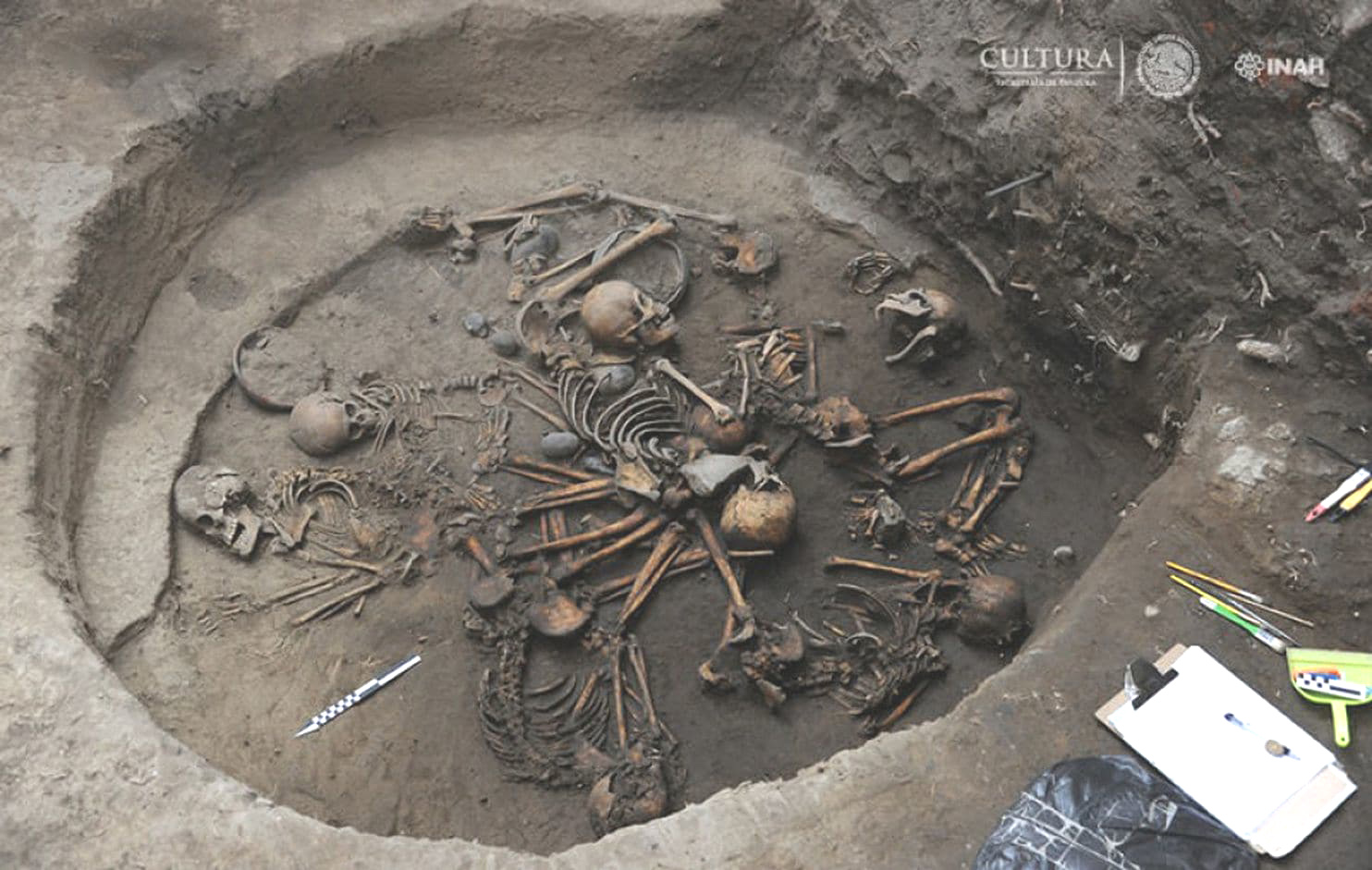The 2,400-year-old skulls faced several directions, and the 10 dirt-brown, pre-Aztec skeletons fanned out to the edges of an area resembling the cosmic spiral of the Milky Way. Nothing like it has been found before.
Mexican archaeologists this week revealed the burial site discovered at Tlalpan, just south of Mexico City, where rich soil, fresh water and animals for hunting made it a focus for Mesoamerican societies centuries before the reign of the Aztecs.
Jimena Rivera Escamilla, the archaeologist who led the dig, said the burial appears to be part of a ritualistic ceremony given the elaborate and deliberate interlocking between skeletons ranging in age from a 1-month-old infant to older adults.
One head was on the chest of another, and the hands of one skeleton were placed on the back of another, she told Televisa News.
A release from Mexico's National Institute of Anthropology and History said the find might help refine understanding of ancient societies in the pre-classical period.
 (Mauricio Marat/Mexico's National Institute of Anthropology and History)
(Mauricio Marat/Mexico's National Institute of Anthropology and History)
The skeletons come from a group that occupied the area for 500 years, wedged in between the Zacatenco phases of 700 to 400 BCE, the era major civilisations in Mexico were developed, and the Ticoman era of 400 to 200 BCE.
Some of the skulls and teeth appeared intentionally deformed, a known practice among Mesoamerican societies that may indicate social status, gender or attempts to resemble divine beings, research has concluded.
 (Mauricio Marat/Mexico's National Institute of Anthropology and History)
(Mauricio Marat/Mexico's National Institute of Anthropology and History)
Clay pots called cajetes and rounded tecomate bowls were also found at the site, along with several types of stones about five feet in the ground, the release said.
Escamilla has not determined how the 10 people died, or if they died together.
If those details are determined, it may be another revelation about how ancient societies lived and died, and later read in bones left behind.
In 2011, researchers concluded that the Xiximes, who lived in the mountainous present-day state of Durango, were cannibals after examining a site dating to the 1400s. Bones were found that appeared boiled, defleshed and marked with stone blades.
2017 © The Washington Post
This article was originally published by The Washington Post.
